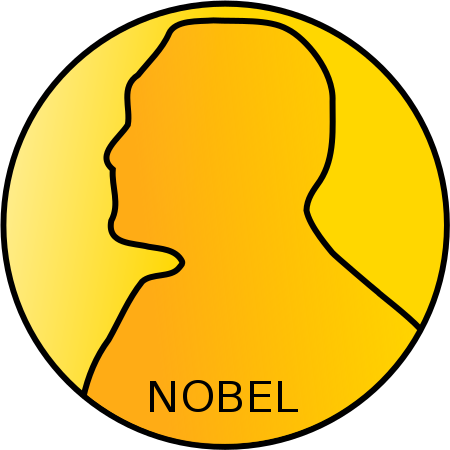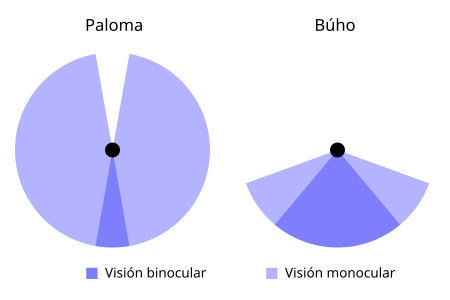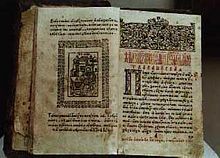Epistle
|
Read other articles:

You can help expand this article with text translated from the corresponding article in Japanese. (January 2022) Click [show] for important translation instructions. Machine translation, like DeepL or Google Translate, is a useful starting point for translations, but translators must revise errors as necessary and confirm that the translation is accurate, rather than simply copy-pasting machine-translated text into the English Wikipedia. Consider adding a topic to this template: there are a…

Questa voce sull'argomento ciclisti spagnoli è solo un abbozzo. Contribuisci a migliorarla secondo le convenzioni di Wikipedia. Francisco Gabicagogeascoa Ibarra Francisco Gabica nel 1968 Nazionalità Spagna Ciclismo Specialità Strada Termine carriera 1972 CarrieraSquadre di club 1961-1967 KAS1968-1969Fagor1970-1972 KASNazionale 1964-1967 Spagna Modifica dati su Wikidata · Manuale Francisco Gabicagogeascoa Ibarra, meglio noto come Francisco Gabica (Ispaster, 31…

この項目には、一部のコンピュータや閲覧ソフトで表示できない文字が含まれています(詳細)。 数字の大字(だいじ)は、漢数字の一種。通常用いる単純な字形の漢数字(小字)の代わりに同じ音の別の漢字を用いるものである。 概要 壱万円日本銀行券(「壱」が大字) 弐千円日本銀行券(「弐」が大字) 漢数字には「一」「二」「三」と続く小字と、「壱」「弐」…

此条目序言章节没有充分总结全文内容要点。 (2019年3月21日)请考虑扩充序言,清晰概述条目所有重點。请在条目的讨论页讨论此问题。 哈萨克斯坦總統哈薩克總統旗現任Қасым-Жомарт Кемелұлы Тоқаев卡瑟姆若马尔特·托卡耶夫自2019年3月20日在任任期7年首任努尔苏丹·纳扎尔巴耶夫设立1990年4月24日(哈薩克蘇維埃社會主義共和國總統) 哈萨克斯坦 哈萨克斯坦政府與�…

La Côte de La Redoute presso Aywaille La Côte de La Redoute, o semplicemente La Redoute, è una celebre ascesa della più antica fra le classiche ciclistiche, la Liegi-Bastogne-Liegi. È situata nel comune di Aywaille, in Belgio, precisamente nella Provincia di Liegi. La sommità, a quota 292 m s.l.m., si incontra dopo 2.3 chilometri di salita, caratterizzati da una pendenza media del 7,4% con punte vicine al 22%. L'asperità si trova ad una trentina di chilometri dalla conclusione della corsa…

Sharp deflationary recession A 1919 parade in Washington, D.C. for soldiers returning home after World War I. The upheaval associated with the transition from a wartime to peacetime economy contributed to a depression in 1920 and 1921. The Depression of 1920–1921 was a sharp deflationary recession in the United States, United Kingdom and other countries, beginning 14 months after the end of World War I. It lasted from January 1920 to July 1921.[1] The extent of the deflation was not on…

Questa voce o sezione sull'argomento chimici non cita le fonti necessarie o quelle presenti sono insufficienti. Puoi migliorare questa voce aggiungendo citazioni da fonti attendibili secondo le linee guida sull'uso delle fonti. Segui i suggerimenti del progetto di riferimento. Katalin Karikó Premio Nobel per la medicina 2023 Katalin Karikó (Kisújszállás, 17 gennaio 1955) è una biochimica ungherese naturalizzata statunitense, specializzata in meccanismi mediati dall'RNA. La sua ric…

Video game franchise This article is about the franchise. For the first installment, see Call of Duty (video game). For other uses, see Call of Duty (disambiguation). Video game seriesCall of DutyGenre(s)First-person shooterDeveloper(s) Infinity Ward(2003–present) Treyarch(2005–present) Sledgehammer Games(2011–present) Raven Software(2016–present) Other Nerve SoftwareGray Matter StudiosNokiaExakt EntertainmentSpark UnlimitedAmaze Entertainmentn-SpaceAspyrRebellion DevelopmentsIdeaworks G…

This article uses bare URLs, which are uninformative and vulnerable to link rot. Please consider converting them to full citations to ensure the article remains verifiable and maintains a consistent citation style. Several templates and tools are available to assist in formatting, such as reFill (documentation) and Citation bot (documentation). (August 2022) (Learn how and when to remove this message) Transportation in the city of Charlotte, North Carolina includes a large and growing mass trans…

Mexican footballer (1942-2018) Antonio Munguía Munguía playing for Cruz AzulPersonal informationFull name Antonio Munguía FloresDate of birth (1942-06-27)June 27, 1942Place of birth Mexico City, MexicoDate of death January 8, 2018(2018-01-08) (aged 75)Position(s) MidfielderSenior career*Years Team Apps (Gls)1962–1966 Necaxa 1966–1972 Cruz Azul International career1965–1971 Mexico 44 (0) *Club domestic league appearances and goals Antonio Munguía Flores (June 27, 1942 – January 8…

American actress (born 1958) Holly HunterHunter at the 2015 San Diego Comic-ConBorn (1958-03-20) March 20, 1958 (age 66)Conyers, Georgia, U.S.EducationCarnegie Mellon University (BFA)OccupationActressYears active1981–presentSpouse Janusz Kamiński (m. 1995; div. 2001)PartnerGordon MacDonald (2001–present)Children2AwardsFull list Holly Hunter (born March 20, 1958)[1] is an American actress. Hunter won the Academy Award for …

Sergei TrufanovTrufanov in Donskoy Monastery, 10 February 1913BornSergei Mikhailovich Trufanov(1880-10-19)October 19, 1880Stanitsa Mariinskaya, Don Host Oblast, Russian EmpireDied(1952-01-28)January 28, 1952 (aged 71)New York City, New YorkOccupation(s)Monk, Author, Janitor Sergei Michailovich Trufanov (Russian: Серге́й Миха́йлович Труфа́нов; formerly Hieromonk Iliodor or Hieromonk Heliodorus, Russian: Иеромонах Илиодор; October 19, 1880 – 28 January …

Ashkelon Academic Collegeהמכללה האקדמית אשקלוןTypePublicEstablished1967PresidentProf. Haim BreitbartRectorProf. Shimon SharvitStudents3,917Undergraduates3,809Postgraduates108LocationAshkelon, IsraelWebsitewww.aac.ac.il Ashkelon Academic College (Hebrew: המכללה האקדמית אשקלון, HaMiklala HaAkademit Ashkelon) is a public college in Ashkelon, Israel. The college has two faculties, the School of Economics and Social Work, for management, logistics, banking, and a…

Diagrama de Descartes. En óptica, optometría y oftalmología, la visión binocular es el tipo de visión en que los dos ojos se utilizan conjuntamente. La palabra binocular proviene de dos raíces latinas, bini, 'doble', y oculus, 'ojo'. La visión binocular puede ir acompañada de la visión simple o fusión binocular, donde se ve una sola imagen a pesar de que cada ojo tiene su propio punto de vista de cualquier objeto. Otros fenómenos de la visión binocular son la discriminación utrocula…

This article relies excessively on references to primary sources. Please improve this article by adding secondary or tertiary sources. Find sources: List of Rubik's Cube manufacturers – news · newspapers · books · scholar · JSTOR (March 2023) (Learn how and when to remove this message) A classical Rubik's Cube in a scrambled state. This is a list of all companies, organizations and individuals that manufacture Rubik's Cubes and other similar twisty puzzle…

Argentine epic poem by José Hernández For other uses, see Martín Fierro (disambiguation). El Gaucho Martín Fierro Cover to the first edition of the book, 1872AuthorJosé HernándezLanguageSpanishGenreNational epic poemPublisherImprenta de la PampaPublication date1872Publication placeArgentinaFollowed byLa vuelta de Martín Fierro Martín Fierro, also known as El Gaucho Martín Fierro, is a 2,316-line epic poem by the Argentine writer José Hernández. The poem was originally publi…

1999 British film by James Dearden Rogue TraderVideo-release posterDirected byJames DeardenWritten byJames DeardenBased onRogue Trader: How I Brought Down Barings Bank and Shook the Financial Worldby Nick LeesonEdward WhitleyProduced byJanette DayJames DeardenPaul RaphaelStarringEwan McGregorAnna FrielNarrated byEwan McGregorCinematographyJean-François RobinEdited byCatherine CreedMusic byRichard HartleyProductioncompanyGranada FilmDistributed byPathé DistributionRelease date 25 June …

У этого термина существуют и другие значения, см. Жаир. Жаир Общая информация Полное имя Жаир да Роза Пинто Прозвище Жажа да Барра-Манса (Jajá da Barra Mansa), Бриллиантовый левша Родился 21 марта 1921(1921-03-21)[1]Куатис, Рио-де-Жанейро, Бразилия Умер 28 июля 2005(2005-07-28) (84 года)Рио-де-Жанейр…

Men's KL1 at the 2018 ICF Canoe SprintWorld ChampionshipsVenueCentro de Alto Rendimentode Montemor-o-VelhoLocationMontemor-o-Velho, PortugalDates22–23 AugustCompetitors13 from 11 nationsWinning time49.796Medalists Esteban Farias Italy Róbert Suba Hungary Luis Cardoso da Silva Brazil← 20172019 → 2018 ICF Canoe SprintWorld ChampionshipsCanadian eventsC-1 200mmenwomenC-1 500mmenwomenC-1 1000mmenC-1…

N.R.M. at concert wRock for freedom, Wrocław, June 17, 2007 Belarusian rock has been developing since the early 1980s. The rock bands include Mroja (later renamed to N.R.M.), Ulis, Daj Darogu!, Kriwi, Lyapis Trubetskoy, Verasy, Open Space, Neuro Dubel, Accent, and Otrazhenie. Metal bands are Asguard and TT-34. Basovišča was a Belarusian rock music festival organized in Gródek, Poland. Other festivals in the field were Be Free and Rock-kola. Censorship There is another side to Belarusian musi…


